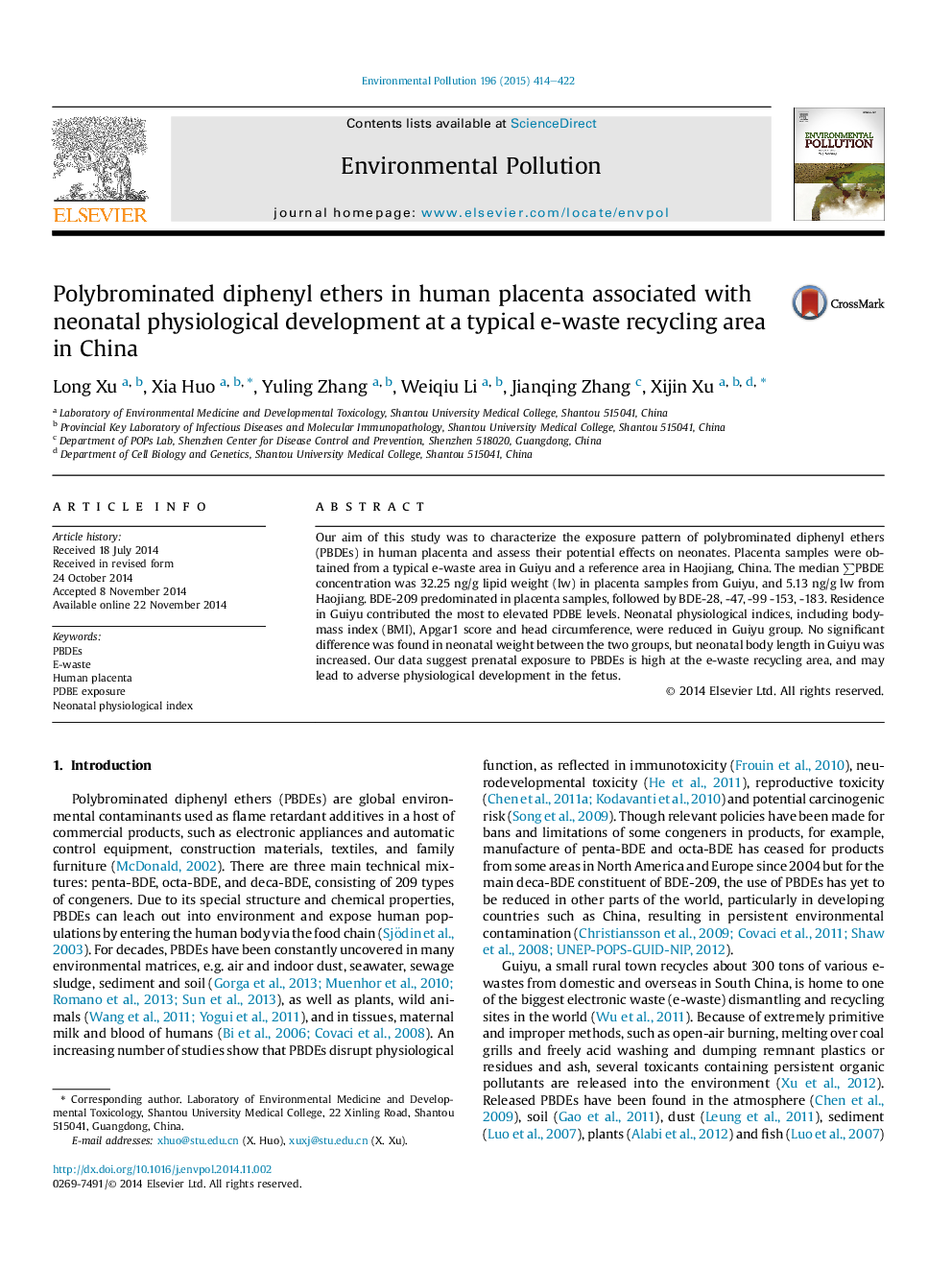| Article ID | Journal | Published Year | Pages | File Type |
|---|---|---|---|---|
| 6317986 | Environmental Pollution | 2015 | 9 Pages |
Abstract
Our aim of this study was to characterize the exposure pattern of polybrominated diphenyl ethers (PBDEs) in human placenta and assess their potential effects on neonates. Placenta samples were obtained from a typical e-waste area in Guiyu and a reference area in Haojiang, China. The median âPBDE concentration was 32.25 ng/g lipid weight (lw) in placenta samples from Guiyu, and 5.13 ng/g lw from Haojiang. BDE-209 predominated in placenta samples, followed by BDE-28, -47, -99 -153, -183. Residence in Guiyu contributed the most to elevated PDBE levels. Neonatal physiological indices, including body-mass index (BMI), Apgar1 score and head circumference, were reduced in Guiyu group. No significant difference was found in neonatal weight between the two groups, but neonatal body length in Guiyu was increased. Our data suggest prenatal exposure to PBDEs is high at the e-waste recycling area, and may lead to adverse physiological development in the fetus.
Keywords
Related Topics
Life Sciences
Environmental Science
Environmental Chemistry
Authors
Long Xu, Xia Huo, Yuling Zhang, Weiqiu Li, Jianqing Zhang, Xijin Xu,
